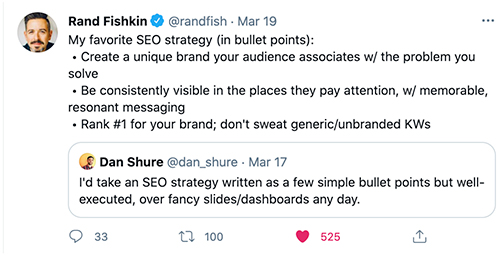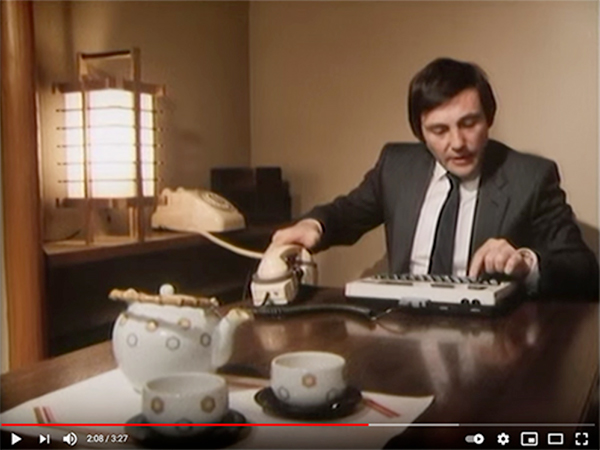Subscribe To Clarity Lab
If you like this issue of Clarity Lab, sign up below to get new issues full of tactics, trends, and news to help you grow your knowledge commerce business. It'll make your life better. Promise.
What Happened When I Broke Down Sobbing In A Tipi – Clarity Lab Issue 75
It was a chilly Fall day, late in the afternoon, some 23 years ago. Up at 8,580 feet in an old mining town in the mountains outside of Boulder, CO, I returned to my tipi nestled in amongst the tall pine trees on the edge of town.
A cold wind pushed through the green needles of the pines above, making it sound like I was underneath gentle ocean waves.
I crumpled up some newspaper, grabbed some kindling, and made a fire in the wood-burning stove, which was my only source of heat.
As the fire began to crackle and the comforting smell of pinewood smoke filled my tipi home, something deep within me broke, and I began to sob uncontrollably.
I had just come home from another day of looking for a job and came back empty-handed…again. And my small pile of money was running dangerously low.
At the time, I was living on the edge making only $7,000 a year. I ate simply, lived simply, and didn’t own much of anything. In truth, I was barely living.
But the war within me was raging. A big part of me wanted to disappear into the wilderness and live off of the land with the Native American survival skills I’d learned.
Another part of me knew that wasn’t a good idea, but here was the problem: I had no idea how to make money.
No one had ever taught me how. Outside of random manual labor jobs that I would pick up on construction sites, I didn’t know how to make enough money to get out of poverty.
That day in the tipi, I collapsed on the floor in a pool of uncontrollable tears. I screamed through my tears, “There has to be another way than this!” But only the trees and squirrels could hear me.
Flash forward about 22 years. It’s 2019, and it’s my 47th birthday on a warm Spring day. I’m at the Tesla dealer, and I just finished signing the papers.
I slid into a spaceship of a car I’d been dreaming of since I was ten years old: a well-built, hyper-efficient electric car with an extended mileage range that I could charge up with solar panels.
I don’t tell many people that I drive this car because it seems to shift the energy in a way that makes me uncomfortable. I don’t post pictures of me with this car online because that’s not something I’d do. I’m not the millionaire internet marketing guru showing off his fancy cars and telling you that you, too, can make millions.
But I have to be honest with you, sometimes I sit in that car and remember back to when I was barely eeking out my survival day-to-day.
I go back to that day I collapsed on the floor of the tipi, shouting at the universe through my tears that there must be another way to make money than low paying jobs digging ditches, and I realize, sitting in the Tesla, that I found another way…and that way led to me sitting in this car I dreamed of since I was a young boy.
The journey I took from the tipi to the Tesla has many lessons I learned along the way. In this video interview with my former client Robert Lunte, founder of Course Creek and The Vocalist Studio, I share the story of how I got from the tipi to where I am today.
It’s a wide-ranging, honest, and somewhat vulnerable conversation that ends with a handful of some of the fundamental principles that have guided me along the way.
I’m sharing this story with you because it’s at the core of why I do what I do with Clarity Lab. I know what it’s like to not know how to make money, and after many years of trial and error I now know some good ways to accomplish that online.
I feel strongly compelled to help other people learn how to do this for themselves because I know how much this knowledge can change one’s life.
I hope you find some good nuggets in this conversation to help you on your path, and honestly, I hope you never try to live in a tipi in the mountains through the winter. Not a good idea.
Let’s keep it down to a dull more.
“What I wish every small business owner knew about making more money is the actual issue they’re trying to address. Making more money isn’t so much a problem to solve as it is the result of solving a core problem in a business.
But when we focus on making more money, the “more” is all we can see and that’s why we end up piling on instead of stepping back to address underlying issues. Most often, the core problem in a business is that there are some fundamental misalignments between operations, offers, marketing, sales, and personal or social priorities.”
That’s Tara McMullin, getting at the core of a problem that most of us business owners are trying to solve: how to get our business to make more money. (Where was she when I was in my tipi?) But frequently, as Tara explains, the answer isn’t more marketing, more lead magnets, more offers, more email list subscribers, or more followers on social media.
There’s something else that needs attention to make more money. Something other than “more.” (I’m okay with this perspective, but I’m drawing the line at coffee. A business can always use more coffee.)
Get out the boat.
You spend three days researching and writing a new blog post for your site. This is a big part of your content marketing strategy: weekly blog post publishing.
You hit publish, send an email to your list about it, and post about it on Instagram. And then…nothing. The proverbial crickets are chirping. (If I ever start a band, I’m calling it The Proverbial Crickets.)
After you publish it, you’re like, “Wait. I thought ‘content is king.’ What’s up with this? I’m working my ass off to create new content constantly, but it’s not getting much attention, and it’s not bringing much traffic back to my site. What am I doing wrong?”
First of all, let’s be clear: Content is Queen. Secondly, you can’t stop after you hit publish. The Queen needs a boat to carry her around the world. The boat is content distribution, and it’s a part of the content marketing engine that many people tend to forget, myself included.
Ross Simmonds dives into 24 content distribution strategies in the video in this blog post. Bottom line: if you want more traffic to your site from your content marketing efforts, the work doesn’t end when you hit publish. That’s just the beginning.
I heard it through the headline.
If you take a first principles look at what it takes to run an online business and ask yourself, “what are the fundamental components of making this business work?” you’ll eventually see that some of the most fundamental, atomic parts of what makes an online business successful (or not) are the words you use.
Why? Because the words you use are your primary channel to connect with people in your market. Words are how you can connect with people’s emotions and get them to see that buying your product, service, or online course is a good idea for them.
Some of the most important words we all struggle with are headlines. As the folks at Buzzsumo say, “A headline isn’t just an article title. It’s a tiny window of opportunity to connect with your audience. It’s an email subject line, a tweet, an h2, a video title – basically anything that aims to convey information succinctly or encourage a desired action – i.e. clicks, views, shares etc.”
Headline writing is hard. Take the headlines I write in these newsletters. I often spend 15 to 20 minutes on each one, and there’s usually 5 of them in each newsletter.
For the blog posts I write, I might spend 3 hours working on the post’s headline. I love writing more than anything, but to be honest, headline writing can feel a bit like putting your head in a woodworking clamp and tightening it down for a few hours while you laser focus on finding the perfect tiny handful of words to summarize a piece of writing in a way that will get people to read or take an action.
So, where can we find some woodworking head clamp relief? Data! What happens when you analyze 100 million of the best performing headlines on the internet?
You get some neuron exploding insights from Buzzsumo about what kinds of words and structures work best in headlines. Sadly, I didn’t notice anything in the data about punny headlines. But I don’t care. I’m going down with my puns firing.
Into the wide blue ponder.
Search engine optimization is complicated. And slow. And often infuriating.
But it doesn’t have to be. Here’s Rand Fishkin, one of the world’s top SEO experts, with his favorite SEO strategy condensed into three bullet points. This is worth pondering. (And head’s up, “KWs” is short for “keywords.”)

That’s all for this week, my friend. And hey, I wanted to let you know: you can always reply to these newsletters if you feel like sharing anything. I usually have time to respond to everyone that writes in, though it may not happen within 24 hours.
If you have criticisms, or if you have topics you’d like to see me cover more of, or if you just want to reach out for a fist bump like “yo, wassssaaaaaap. Nice newsletter, man,” feel free to hit reply and send me a note.
You’ll be glad to hear that I have some new technology for sending and receiving “e-mail,” which allows me to respond to your “e-mails” by dialing up a database through my rotary telephone. It’s called a “mo-dem.” If you’d like to learn more about this ground-breaking communication technology, please watch this short informational video from 1984:

